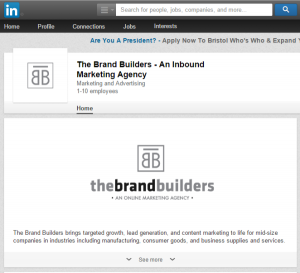To avoid another missed quarter, your strategy as CSO/ VP Sales has always been to ramp up field sales activity. Aggressive pipeline reviews, increased focus on deals that may close this quarter, temporary SWAT teams to help win big deals, yada, yada, yada.
These tactics used to work 5 or 10 years ago, but not so much lately. Something has changed.
The Common Denominator

Whatever has changed, it’s common across a lot of companies because the average CSO/VP Sales tenure has dropped to just 18 months. You definitely don’t want to fall into the same trap as your industry colleagues!
You know that the marketplace has changed over the past 5 to 10 years due to internet, mobile, and social. But has it fundamentally changed your target B2B buyers? Yes, it has, in a big way. The buyer’s team members have unprecedented access to business and product information online, literally at their fingertips. In fact, the buying team can go through 50% to 70% of their purchasing process before needing to contact your sales reps.
If your salesforce can’t influence the buyer team early in the buyer purchasing process, like they used to 10 years ago, you will be at a significant disadvantage. If your competitor is already influencing these buyers, and you’re not, then you’re in big trouble.
What Does It Look Like If Buyer Alignment Is The Root Cause?
If your sales process IS NOT ALIGNED with the buyer’s purchasing process, than the company’s overall revenue strategy is probably not aligned either. If you consider the sales barriers that are preventing your team from reaching this year’s goal, and compare it to the barriers that your team experienced five or more years ago, what is different?
- Insufficient new business growth
- Decreasing pipeline quality
- Unreliable quarterly sales forecasts
- Increased reliance on new business leads from Marketing
- Poor quality leads from Marketing
- Insufficient volume of quality leads from Marketing
- Difficulty for Sales and Marketing to agree on the definition of a sales-ready lead
- Increased product portfolio complexity
- Insignificant sales bump from the new product launches
If you are experiencing most the above symptoms, then your sales process is not sufficiently aligned with your buyers purchasing process.
What Does It Look Like If You Have No Serious Alignment Issues?
If both your sales process and the company’s revenue strategy IS ALIGNED with the evolving buyer purchasing process, then high 5’s all around; you are the hero in a high growth company! So what are some of the clues that suggest you have what it takes to be a high growth company?
- Your organization has a well-defined and understood sales process that mirrors the current buyer purchasing process, so you are experiencing 18% more sales growth than others according to a recent study by Hubspot and the Sales Management Association.
- Your Sales reps effectively leverage social selling in their sales process, so they are 79% more likely to attain their quota then ones who don’t, according to Aberdeen Group.
- Over 62% of your new business leads are generated digitally according to a recent study by Hinge Research Institute, Society for Marketing Professional Services and Association for Accounting Marketing.
- About 47% of your forecasted pipeline is generated from Marketing-generated leads according to a study by Aberdeen Group.
- The last major product launch is contributing about 50% of the company’s sales and profits according to studies by the Product Development & Management Association (PDMA).
- You have a strong collaborative relationship between Sales and Marketing at all levels as demonstrated by the following results, according to multiple research studies by Aberdeen Group:
- Your sales reps are achieving 75% of their quota (versus industry average of 50%),
- Your organization is achieving 100% of its sales goal (versus industry average of 61%), and
- Your corporate revenue is growing at least 13% annually (versus an industry average of 4.3%).
At the end of the day, if the root cause is a sales execution issue, it is totally within your responsibility as CSO/ VP Sales. The CEO and Board are expecting you to get the sales force on track, quickly.
However, if the root cause is poor alignment with your target buyer, you’re going to need a lot of help from others to fix it, particularly help from your CEO, CMO, and an experienced revenue acceleration consultant. A detailed discussion and outline of a CSO Action Plan can be found here.
Was this helpful? Then please share it with your colleagues.
Business & Finance Articles on Business 2 Community
(212)









